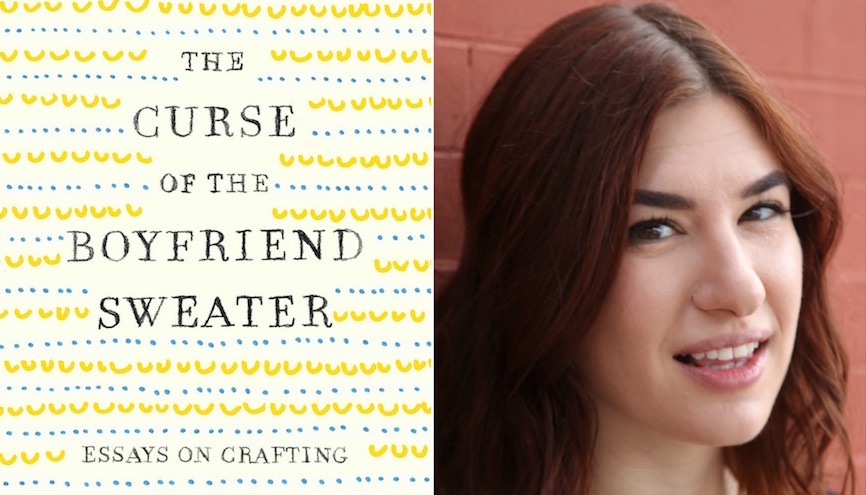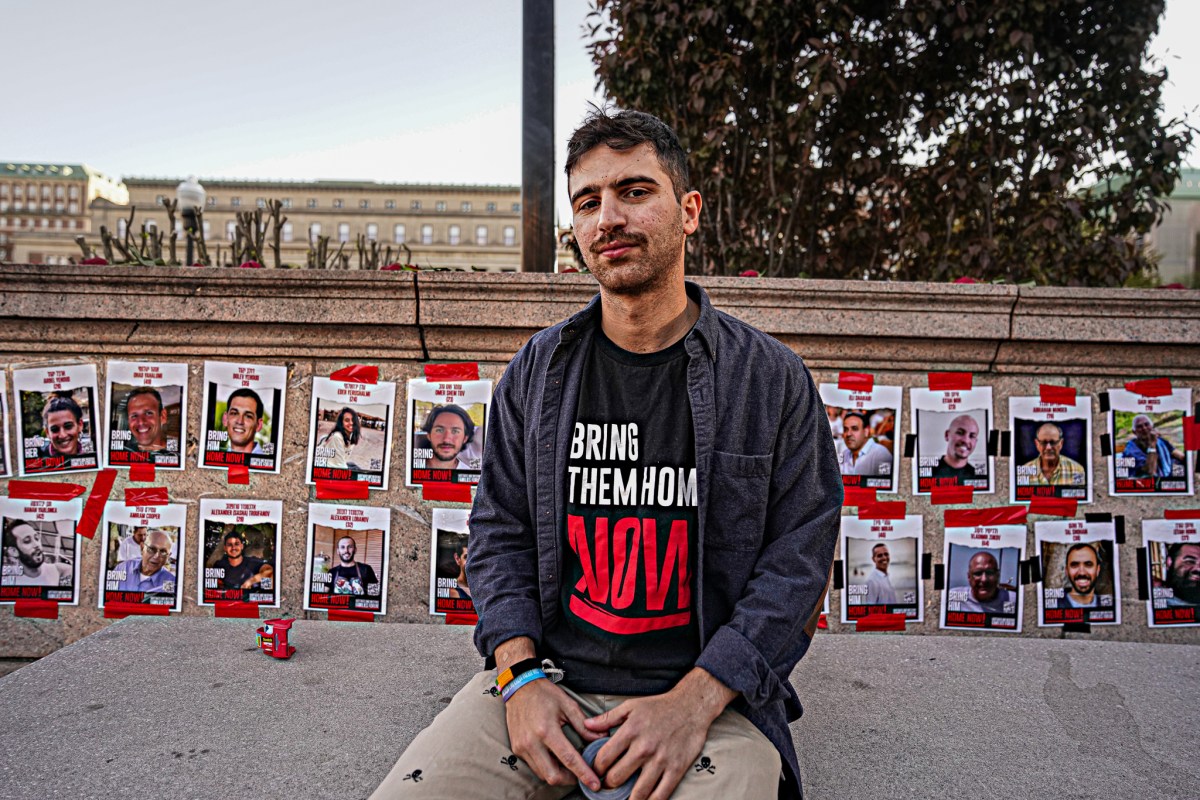You don’t have to actually care about knitting to be completely engrossed in “The Curse of the Boyfriend Sweater,” Alanna Okun’s new book of essays on crafting. When I tell the Brooklyn-based author how much I relate to her debut, despite being incapable of making anything with my hands, except a mess, she laughs and says, “Oh good! That’s the intended effect.”
To me, Okun’s memoir reads almost as a self-help text (in the best way), and a call to readers to find their bliss in a “soothing repetitive activity,” whatever form that might take for them. It could be yoga, or baking, or fishing — hell, adult coloring books (no judgment). What’s the thing you turn to that quiets your mind, steadies you even when you feel the most in flux?
For Okun, that’s knitting. The act of casting on, casting off, frogging, purling — read it and learn, folks — has carried her through the big hiccups of her 27 years, from breakups to grief to career uncertainty. It’s also a daily distraction that calms her fits of restlessness, anxiety and boredom.
The senior editor at Racked tells me how knitting became her anchor, how it’s made her a better writer, and she gives practical advice for how beginners can get started with the craft — because, yes, metaphors aside, hers is a book about literally making things out of yarn.
Tell me about how knitting became your rock.
It’s kind of been the most constant thing in my life, I was realizing. I can’t totally say if I learned to knit before I learned to read, but think I must have. I definitely learned when I was six years old. Not only has it been this defining metaphor, it’s also been this very literal constant — something that I’ve done when I’m bored or lonely or when I need something to fill time. What I really love about knitting is that I can do it when I’m watching a movie or talking to a friend at a bar or while getting stuck on the subway. It’s become this wonderful layer in my life. That’s the physical aspect of it: this rhythmic, meditative process that takes me out.
In terms of the more emotional stuff, I’ve always thought of knitting and crafting as something I can control. It’s this way of shrinking the world in front of me down so that it’s small enough that I actually just deal with it. I’m a person who has a lot of anxiety. I’ve had loss and grief like anyone else. Crafting allows me to think, “OK, I can solve this problem. I may not be able to solve the big ones, but I can finish this row.” It’s been really useful for me. You know what, things are tough and swirling, but they can also be small and easy and a simple motion.
I’d love to hear more about the relationship of knitting to anxiety and how, as you’ve written in the book, it’s helped you curb destructive behaviors. Whether it’s lurking on Instagram or picking at your scalp, knitting has a way of literally stopping you from going there, because your hands are occupied.
It’s totally metaphorical, but it’s also very physical to hold your own hands captive. Because I’ve definitely struggled with hair pulling in the last four or five years — trichotillomania, I think they call it — and realized it was such an automatic motion that I did when I was anxious or couldn’t control what else was going on. Knitting satisfies the same urge, weirdly. Doing a stitch feels almost the same to my brain.
When you’re knitting, you can’t look at your phone. You can’t fret over typing an email. You’re not able to engage in the garden variety bad behaviors that plague so many of us.
For you, how is the act of writing similar to or different from the act of knitting?
Oh, that’s a great question. I’ve always thought of them as muscles located in the same part of me, if that makes sense. I think that so much of what they are is taking these tiny components — taking words, taking stitches — and trusting the process that they will become so much more than the sum of their parts. Three words isn’t huge, three stitches isn’t really either, but a couple thousand will start to add up to something. I think in my writing I’m often compelled to want to be done, to have completed the essay, to have the thing. With knitting, you can’t do that.
Knitting has allowed me in my writing to slow the f—k down, honestly. You can only knit this row as fast as you can do it, you can only write this sentence as fast as you can do it. It’s also been a nice way to solve problems that crop up in writing. If I’m feeling really blocked and staring at my computer, pulling out my knitting and doing a little bit is a nice way of having that motion and getting it back into my fingers. Knitting is almost like making the bed in the morning, that prop-open-the-door task that makes you feel much more capable about doing the harder stuff.
Ok, now to actually talk about the nitty-gritty of knitting. Do you have any advice for folks who want to get started but might be completely intimidated?
The first place I would tell anyone to go is this website called Ravelry. It’s this database of patterns, free and for purchase; forums where you can ask questions … It’s a great place to feel like you’re not alone and that there are resources out there. In terms of actually learning to knit, there are great Youtube channels. And there’s this website I love called Knitty.com. A book I always recommend to new knitters is “Stitch ‘n Bitch: The Knitter’s Handbook” by Debbie Stoller. It’s so great. That’s the book I was reading when I’d learned from my grandma but didn’t really know how to even conceive of like, making a sweater. That’s what gave me the confidence and the ground rules to launch into that phase of my knitting.
Any knitting shops to recommend?
I love my hometown knitting store, called the Black Sheep Knitting Co. in Needham, Mass. New York is very well known for Purl SoHo; they have classes there. What I would recommend more than anything is to find your local yarn store and go there. Knitters are really friendly. It can be really scary to walk in and be like, “I want to learn a new thing!” But they’ll be very stoked that you want to do it.



















